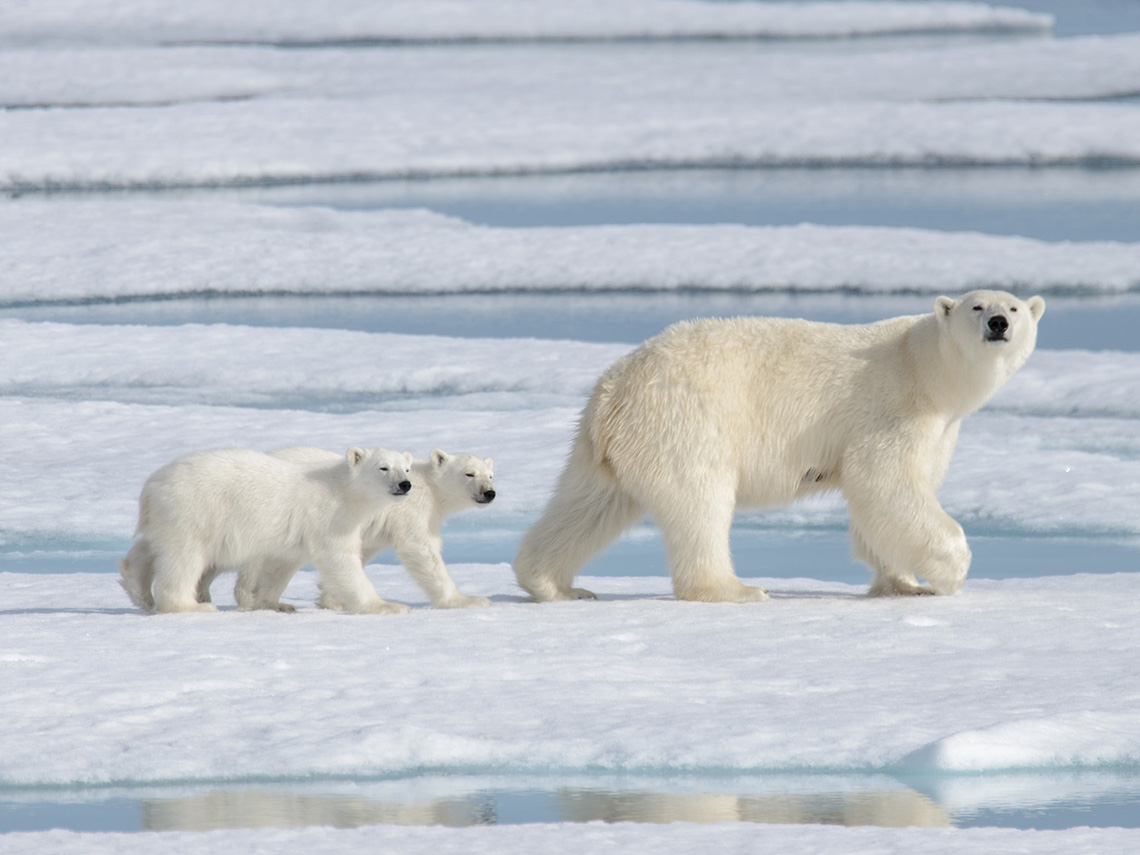Minds On
What is and is not a nature program?
Explore the following videos. As you explore, try to identify which of the two can be considered a ‘nature program.’ The first video is an episode from a series called Canada Crew. The second video is an episode from Zamzoom’s Animal Adventures.
Student Success
Think-Pair-Share
Consider the following questions:
- Which video do you think fits best in the category ‘nature program’?
- Why do you believe this video is a nature program and the other is not?
- What differences and similarities are there between the two?
Note to teachers: See your teacher guide for collaboration tools, ideas and suggestions.
Action
Characteristics of nature programs
In the Minds On section, you explored two videos about animals. How can we tell the difference between different types of media that are about the same topic?

The first video gives some information about animals such as: a full-grown moose weighs 550 kilograms. This is a fact about moose. We can verify this fact is true by doing research.
We have identified that the first video has these characteristics:
- true facts about animals
- topic of the video is a real animal
There are some characteristics that do not fit with the category such as nature program. For example:
- animals using a tablet
- animals are wearing clothing
Neither of these two things are something that animals would do. For this reason, we would not classify the first video as a nature program.
The second video gives us information about giraffes. For example, "their spots help them blend in with the shadows and light, and each giraffe has a completely different spot pattern, like a fingerprint." We can verify this fact is true by doing research.
Although the video uses animation, there is footage of real giraffes throughout the video.
We have identified that the second video has these characteristics:
- true facts about animals
- topic of the video is a real animal
- includes footage of giraffes
For this reason, we can classify the second video as a nature program even though it includes animation.
Brainstorm
Brainstorm
Using the two videos from the Minds On section, research nature programs to use for the next activity. There are many great nature programs available to research. For example, a famous Canadian, David Suzuki, has created many nature documentaries. You can find those documentaries online.

Use the videos in the Minds On section and those that you have researched. Brainstorm the different characteristics of a nature program. Then, brainstorm characteristics that help us identify when a media text is not a nature program.
Complete the Venn Diagram in your notebook or using the following fillable and printable document.
Press the ‘Activity’ button to access the Venn Diagram.
The purpose of nature programs
All forms of media are created by someone for a specific purpose. Let’s explore an episode of Soper Creek Animal Ambassador. In this episode, Bryce discusses why he enjoys being an animal ambassador. As you explore the video, think about who produced this video and why it was created. What is the purpose of this episode?
Student Success
Think-Pair-Share
If possible, share your thinking with a partner. Discuss who produced this video and why it was made. What evidence did you use from the video to answer these questions? Record your ideas orally, digitally, in print, or in a method of your choice.
Note to teachers: See your teacher guide for collaboration tools, ideas and suggestions.
Consolidation
Nature program
Test Your Skills!
Test your skills
Plan and research
Imagine you are part of a research team that has been asked to create an outline for a nature program. First, you need to select the animal that they will feature in the episode. Then, you need to research facts about the animal. Consider explaining where the animal lives (the habitat). Include information about what the animal eats (diet) and what features it has. Also, include at least three facts about the animal in the episode.

Design
Use the results of your brainstorm in the Action section to help design the outline. You want to include characteristics of nature programs. Identify at least two characteristics that you will use in the episode or outline. These characteristics will help the audience understand that this is a nature program.
Complete the Nature Program Design in your notebook or using the following fillable and printable document to help design the episode outline.
Press the ‘Activity’ button to access the Nature Program Design.
Purpose
Consider these questions:
- What is the purpose of the episode or outline?
- Do you want the audience to understand something about the animal?
- Do you want to inspire the audience to take good care of the planet and environment?
- What can you add to your episode to make sure the audience understands the purpose?
Describe
Create a description of your nature program episode. You may create the description using a method of your choice such as in writing, in an audio recording, or in a video. You may use the following checklist to help ensure you have met the success criteria:
- I have researched and described three facts about the animal.
- I have included at least two characteristics of a nature program.
- I have identified a purpose and described how I would communicate this to the audience.
Share
If possible, share your work with a partner.
Reflection
As you read through these descriptions, which sentence best describes how you are feeling about your understanding of this learning activity? Press the button that is beside this sentence.
I feel...
Now, record your ideas using a voice recorder, speech-to-text, or writing tool.